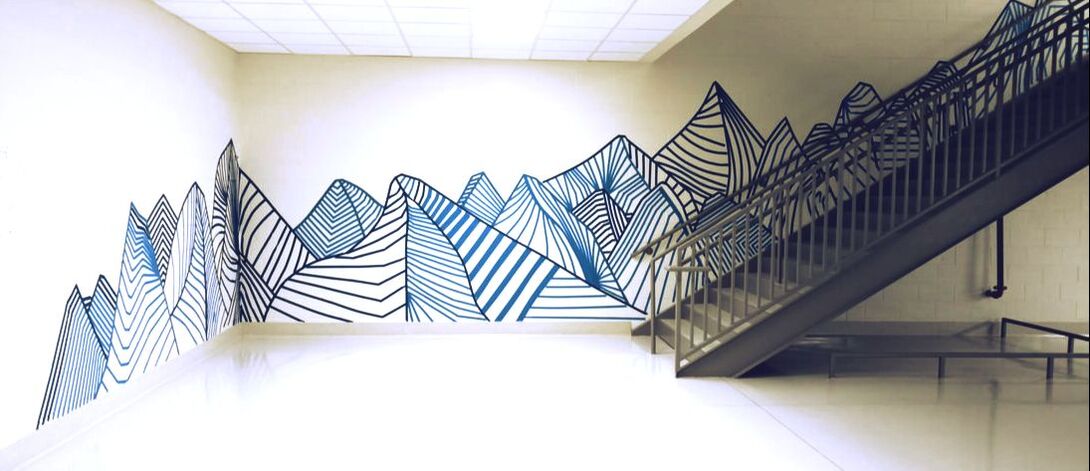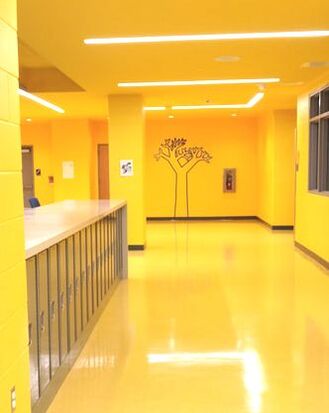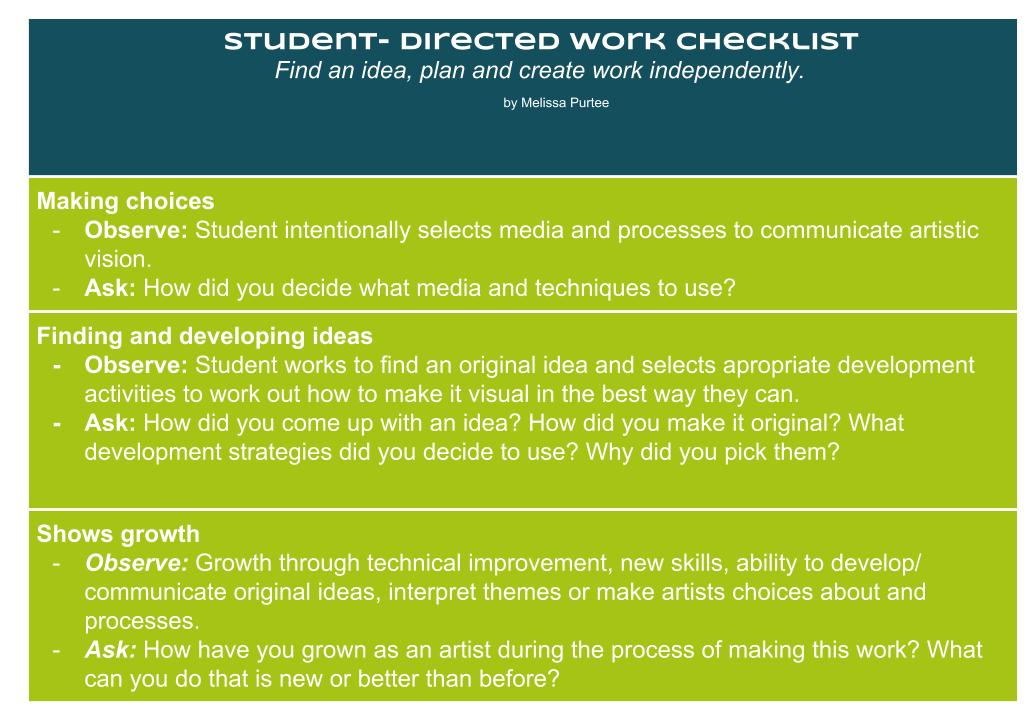|
This year we moved into a brand new building, gleaming and beautiful - and full of white, empty walls. I thought about how we could fill them, to start to make our new space feel more like home, and decided on collaborative tape murals. Working with painters tape is similar to drawing, because pieces of tape are essentially lins, but it's also incredibly engaging because of the large scale and ease of working with a group on a wall size canvas. However, the best part is the connection it creates between the students working and the community who look, appreciate and ask questions during the work. I had six rolls of painter's tape and a combination class of 20 beginning and advanced students, almost all seniors, so I planned what I thought would be a one day experience. On the first day of class I introduced the concept of tape art by showing a short video clip of Darel Carey at work, then walking around the school with the class to identify good spots for our murals. Groups and ideas formed organically, then students got to work. I supported students in developing ideas by having conversations with each group as they worked, asking questions and answering any they had. * If you're reading this and looking for more structure, check out this lesson plan I wrote a few years ago for AOE, or this book I keep hearing great things about. Some students decided to work alone, some in groups of varying sizes. Since the tape is totally removable, I don't normally ask approval before starting, but I was a bit curious about what my new principal would think of our work, so I was delighted when I saw her taking pictures of the the process and sharing them on twitter.
A few groups decided to work on a much larger scale than I expected, and I had to get more tape, which is the best of problems to have! Four of the groups ended up working for multiple days, which gave me lots of valuable information about the personality of this group, many of whom seem to really enjoy collaborating. In total, the group used 11 rolls of tape, though 5 of them were use on the large stairway mural. This ended up being such a positive experience for my students, who loved the process and for our school, which now feels a bit more like ours. Check out some of their work below.
0 Comments
It's been seven years since I left my elementary TAB studio and tried to recreate the magic in a high school setting. On the first day at my new job I quickly realized that much of what I did with my younger students needed to change in my new setting, but this summer I've been thinking back and wondering if I changed too much. I loved how I graded in my elementary classroom. I created a checklist with learning goals for studio work time that correlated with state standards with big picture ideas, like "I can use my own ideas to make art". As kids created I'd walk around, look at work and engage in conversation, looking for evidence of student's meeting learning goals. Most often I could observe them meeting goals just through looking at work process and finished work. If I couldn't, I'd ask questions. When I found visual or verbal evidence of meeting a goal, I'd make a check next to the student's name on the list. If I didn't find evidence I'd know to look again the next week, reteaching or providing other support as each situation required. This was a meaningful assessment for me because it was student centered and provided immediate feedback that I used in real time to adjust instruction. This was a meaningful assessment for kids because it gave them multiple ways to demonstrate knowledge, responded to any needs with differentiated support and was centered on personalized response to the art they were creating as they created it. I worry that the digital portfolios that I have used for my high school students share and reflect on work are not an equitable way to form grades because they rely heavily on writing instead of giving students multiple ways to show evidence of learning. Towards the end of last school year I decided to try observational grading with my beginning high school classes. It's important to know that this class is divided into the following three stages:
I plan to use these checklists to help form grades, but mainly (and more importantly) I'll use them to help focus the formative assessment I constantly do during work time on really essential learning and on providing targeted support for those who need it.
|
Mrs. PurteeI'm interested in creating a student student centered space for my high school students through choice and abundant opportunity for self expression. I'm also a writer for SchoolArts co-author of The Open Art Room. Archives
December 2019
Categories
All
|













 RSS Feed
RSS Feed
